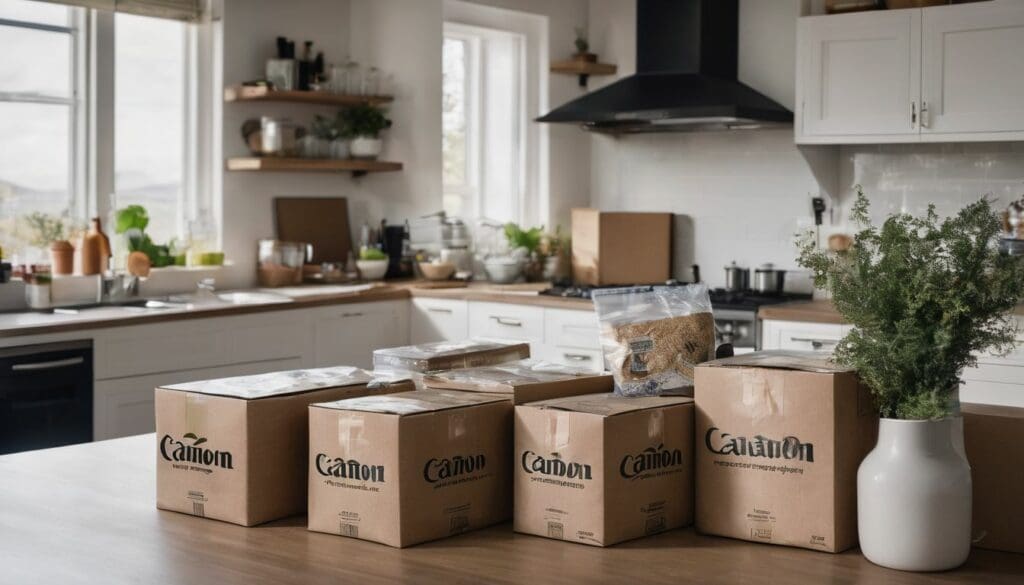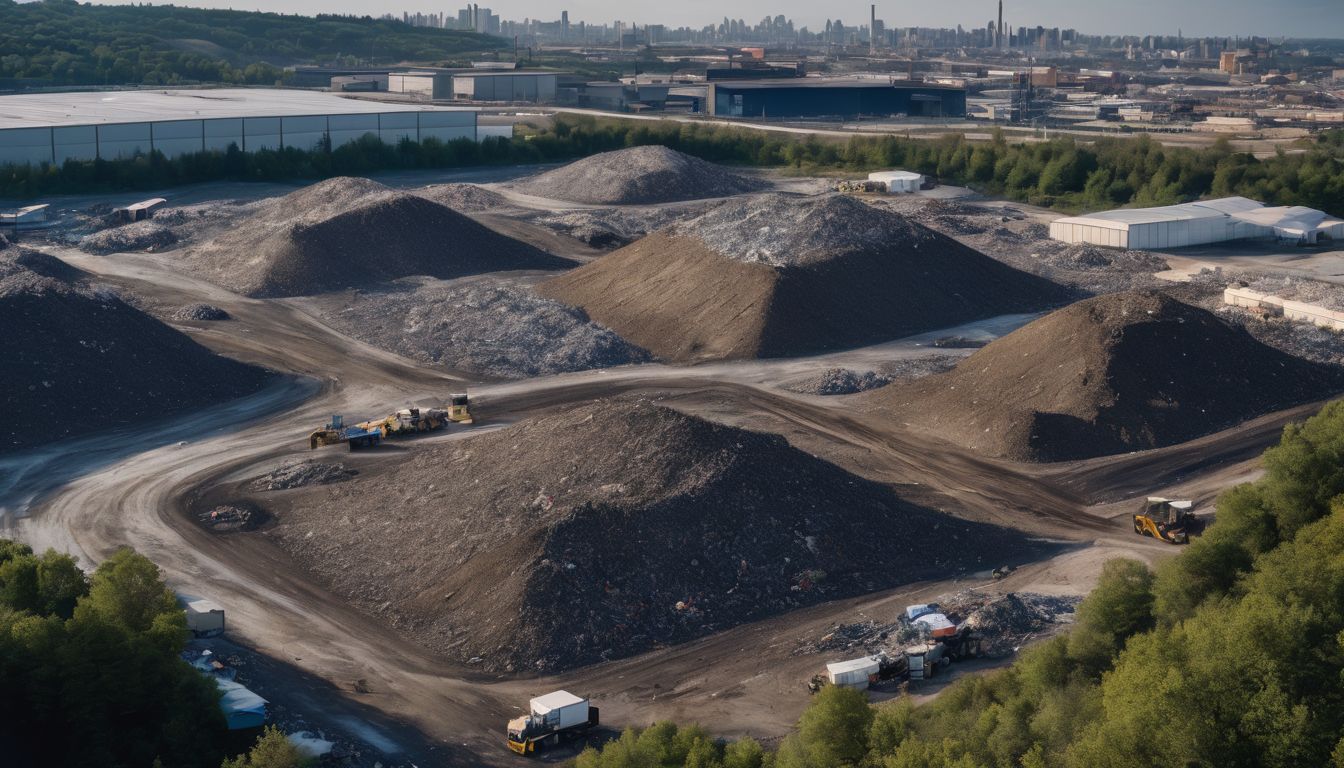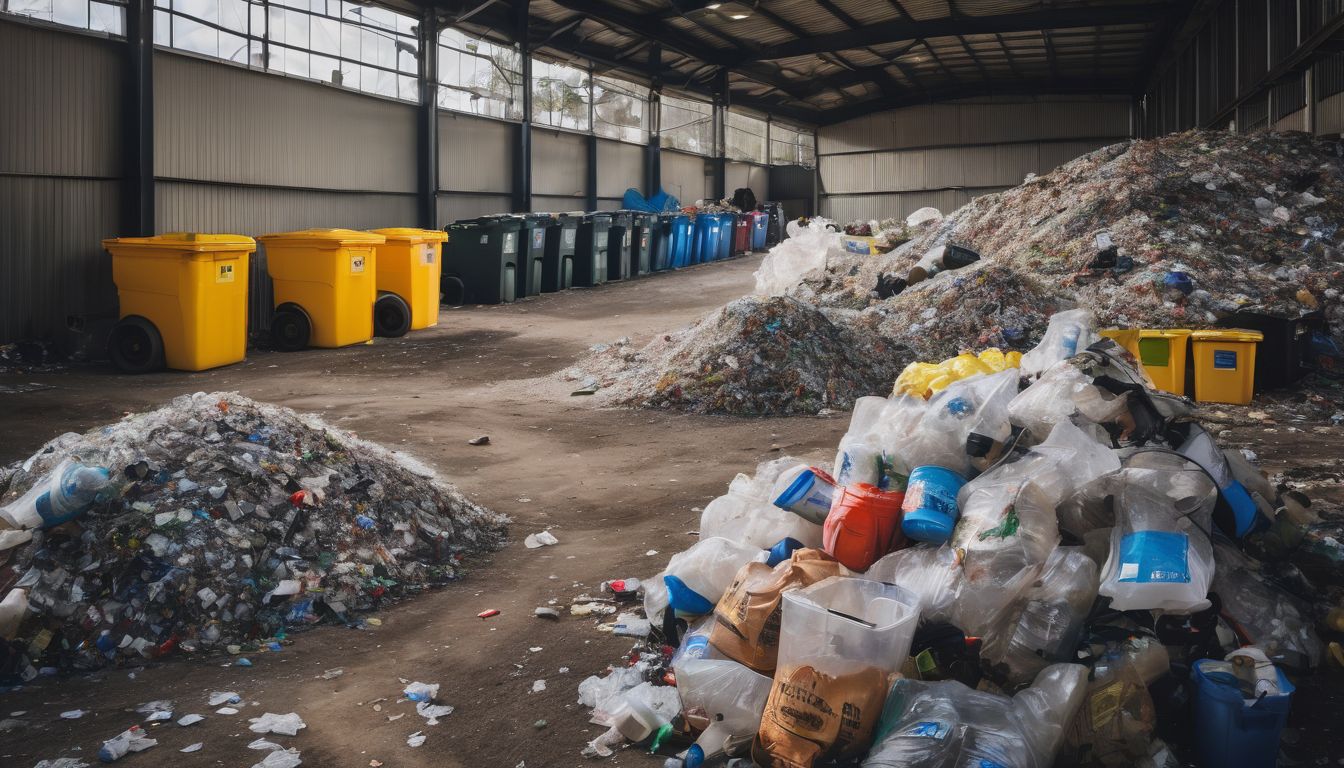As the world grapples with plastic pollution, the choices we make in packaging our products have never been more critical. Did you know that sustainable packaging could dramatically reduce the overall environmental impact of consumer goods? This article will guide you through the vital role of design in creating recyclable packaging, helping to turn the tide on waste.
Discover how simple changes can lead to big differences for our planet.
Key Takeaways
- Packaging designed with recyclable materials like glass, paper, and certain plastics helps cut down on waste and supports the circular economy.
- Design strategies for recyclability include using monomaterials, avoiding complex coatings, and creating easy-to-recycle products by keeping components separable.
- Consumer recycling behaviour is influenced by clear labeling, education on environmental impact, and access to recycling facilities; this shapes how effectively packaging is recycled.
- The use of post – consumer recycled content in packaging design can significantly reduce the need for new resources while supporting a sustainable approach within the industry.
- Trends in eco – friendly packaging are moving towards simplicity in design to facilitate easier recycling processes and minimise carbon emissions.
Understanding Consumer Recycling Behavior
Packaging design plays a crucial role in influencing consumer recycling behavior. It is important to understand the factors that affect consumers’ decisions when it comes to recycling, including the influence of packaging design and other environmental considerations.
The influence of packaging design
Good packaging design grabs attention, but it also plays a pivotal role in recycling. When designers opt for recyclable materials and create easily separable components, they support the circular economy.
Products become simpler to recycle, reducing their carbon footprint and easing waste management challenges. Customers often judge a product by its package; therefore, sustainable packaging design can sway consumer behaviour towards more ecofriendly choices.
Designers must consider how materials like plastics affect the environment long after they serve their purpose. Reusable packaging solutions are on the rise because they cut down on plastic waste and promote upcycling.
As food preservation becomes increasingly crucial, innovative packaging that’s both effective and environmentally responsible is non-negotiable. Forward-thinking brands are already using green marketing to highlight these positive changes – leading us into other factors affecting recycling behaviour.
Other factors affecting recycling behavior
Consumer attitudes, knowledge, and infrastructure play crucial roles in recycling behavior. Consumer awareness about the environmental impact of packaging materials influences their recycling habits significantly.
Furthermore, accessibility to recycling facilities and community programs also affects individuals’ willingness to recycle. Education and convenient access to recycling options are essential factors that can positively impact consumer behavior towards sustainable practices.
Understanding these additional factors helps to develop comprehensive strategies for encouraging recycling behaviors effectively.
Designing Packaging for Recyclability
Packaging designed for recyclability focuses on using materials that are easily recycled, such as glass, paper, and certain types of plastic. Strategies like designing packaging with minimal components or using monomaterials can also improve recyclability.
Materials and solutions that are most recyclable
Strategies for designing recyclable packaging
To design recyclable packaging effectively, consider the following strategies:
- Choose materials that are easily recyclable such as paper, cardboard, glass, and certain types of plastics.
- Design packaging with minimal mixed materials to facilitate easier recycling processes.
- Utilise monomaterials to ensure that the entire package can be recycled without separation.
- Avoid using coatings or colourants that can contaminate recycling streams and make materials harder to recycle.
- Incorporate clear labelling on packaging to educate consumers about proper recycling methods.
- Consider the end-of-life options for the packaging, aiming for a design that aligns with a circular economy model.
- Invest in research and development for innovative eco – friendly materials and packaging solutions.
Considerations for recycled content
When designing environmentally friendly packaging, it is essential to consider the recycled content. Using recycled materials reduces the demand for new resources and minimises waste.
Incorporating post-consumer recycled content into packaging can significantly contribute to a circular economy by closing the loop on material use. Furthermore, it aligns with consumer preferences in packaging, as more individuals are seeking eco-friendly options.
Manufacturers should prioritise sourcing and utilising materials with high levels of post-consumer recycled content to reduce the carbon footprint of their packaging.
The Recycling Process
The recycling process involves the collection of materials, sorting and market strength, as well as manufacturing and design. Each step plays a crucial role in ensuring that packaging is recycled efficiently and effectively.
Collection of materials
Packaging materials are collected from households, public places, and businesses. Recycling facilities accept materials such as paper, cardboard, glass, aluminum, steel, and various plastics. These materials are then sorted to separate them into different categories for processing. The recycling process involves the following steps:
- Collection trucks pick up the recyclable materials from designated collection points.
- The collected materials are transported to recycling facilities where they undergo sorting.
- Sorters separate the materials into different categories such as paper, plastic, glass, and metal based on their composition.
- Once sorted, the materials are processed to prepare them for manufacturing new products through techniques such as shredding and melting.
- After processing, the recycled materials can be used as feedstock in the production of new packaging or other products.
- Market strength is crucial in ensuring that recycled materials find suitable buyers and continue to contribute to sustainable practices.
- Educating consumers about proper recycling practices can also encourage better material collection and improve the overall efficiency of recycling programs.
Sorting and market strength
Recycling facilities sort collected materials to prepare them for processing. Market strength, or demand for recycled materials, determines the viability of recycling programmes. Strong market demand incentivises collection and sorting efforts.
It also supports the economic sustainability of recycling, making it an attractive option for diverting waste from landfills.
The sorting process is crucial to ensure that only clean and suitable materials are sent for recycling. Proper sorting enhances the quality and value of recycled materials, which in turn boosts market strength.
Manufacturing and design
In the manufacturing and design stage, companies can continue to prioritise sustainability by incorporating eco-friendly materials into their packaging. This involves choosing recyclable or biodegradable materials that minimise the environmental impact while still fulfilling the functional requirements of the packaging.
Design strategies also play a significant role in ensuring that packaging is easily recyclable or reusable. By considering the entire lifecycle of their products, manufacturers can contribute to reducing waste and promoting a more circular economy.
Manufacturers should also consider implementing innovative solutions such as using monomaterials or eliminating unnecessary coatings and colourants in their packaging designs. Additionally, labelling and cleaning considerations should be taken into account to ensure that the packaging is easy for consumers to recycle properly.
Trends and Tips for Recycling-Friendly Packaging
Utilising monomaterials, avoiding coatings and colorants, and considering labeling and cleaning considerations are important trends in designing packaging for recyclability. Read on to learn more about how packaging design plays a crucial role in promoting recycling practices.
Monomaterials
Monomaterials, such as PET and HDPE, are becoming increasingly popular in packaging design. These materials are easier to recycle because they consist of a single type of polymer. By using monomaterials, the recycling process becomes more efficient, reducing contamination and improving the quality of recycled materials.
Brands are embracing monomaterial packaging to support a circular economy and reduce waste.
The advantages of monomaterials include better recyclability without compromising on performance or protection for products. Furthermore, using mono-materials in packaging helps to reduce carbon emissions by lowering energy consumption during recycling processes.
Avoiding coatings and colorants
Packaging designers should avoid using coatings and colourants to improve recyclability. These elements can complicate the recycling process and may lead to lower-quality recycled materials.
Instead, opting for clear or translucent packaging allows for easier sorting at recycling facilities and ensures that the materials can be effectively processed.
Eliminating coatings and colourants supports the use of mono-material packaging, which is more easily recyclable than multi-layered or mixed material packaging. This change contributes to a reduction in plastic waste and helps promote a circular economy by encouraging the reuse of materials in new products.
Labeling and cleaning considerations
Packaging, when disposed of with labels and adhesives, can hinder the recycling process. Hence, it is essential to consider the recyclability of labeling materials. Here are some key considerations for environmentally conscious individuals when it comes to labeling and cleaning:
- Label Adhesives: Opt for labels that use water-based adhesives, making them easier to remove during the recycling process.
- Clear Instructions: Ensure clear instructions on packaging for consumers about how to properly dispose of labels and packaging components.
- Easy-to-Clean Design: Choose packaging that is easy to clean, as dirty or contaminated materials may be rejected by recycling facilities.
- Compatibility with Recycling Systems: Select labeling materials that are compatible with existing recycling systems and do not disrupt the recycling process.
- Minimalistic Labeling: Use minimalistic labeling to reduce the use of non-recyclable materials and make it easier for consumers to identify recyclable components.
Conclusion
In conclusion, packaging design plays a crucial role in influencing consumer recycling behavior. Designing packaging for recyclability and using eco-friendly materials can significantly reduce the carbon footprint of packaging.
Embracing trends like monomaterials and considering the entire lifecycle of packaging is essential for effectively reducing plastic waste and promoting a circular economy.eco-friendly materials and embracing trends are critical for supporting conservation efforts.
FAQs
1. How does packaging design impact recycling?
Packaging design greatly affects recycling as designs focused on recyclability and the use of eco-friendly materials can reduce plastic waste and contribute to a circular economy.
2. Why is material choice important in packaging for the environment?
Choosing the right materials for packaging is crucial because it lowers the carbon footprint and supports efforts to design with the environment in mind.
3. Can changing consumer behavior influence packaging innovation?
Yes, when consumers demand greener options, companies are more likely to innovate their packaging designs to be less harmful to the planet by focusing on reducing waste and promoting recycling.
4. What are some examples of ecofriendly materials used in sustainable packaging?
Ecofriendly materials often used include biodegradable plant-based substances or recycled content that help achieve sustainability goals in packaging while still being effective for consumers’ needs.





